

Whether your goal is to earn you colors with the one of Aiken's local hunts, show in the Hunter Ring at Bruce's Field, have a cross country school at The Vista or enjoy a hack in Hitchcock Woods, Cissie and Tracey will bring their trusted expertise to guide you to the perfect property to complement your lifestyle!

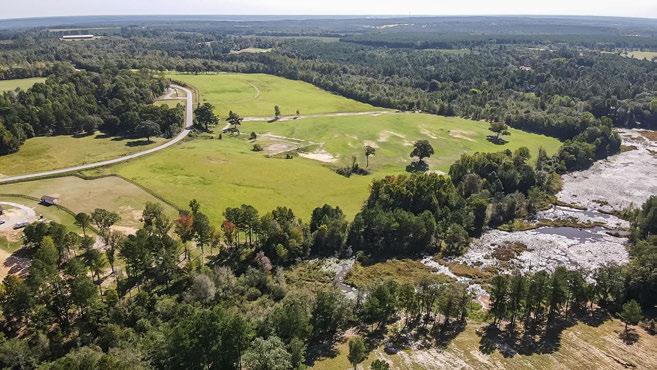





803.998.0198
Cissie
Beautiful
& Superb Properties for Aiken's Sporting Life
Sullivan and Tracey Turner
40+
and
of
historic
and luxury
Tracey
Stunning Homes,
Farms
Cissie
are lifelong equestrians who pair their love of sport with a combined
years of experience assisting buyers
sellers
farms,
homes
estates.
Lanes End at Hopeland Farms 1047 Implement Road La Folie 320 Newberry Street SW Tods Hill 13.28 Acres on Reeves Street
Trust the Market Leader's #1 Team in Aiken, SC Leader in Luxury Real Estate Sales Tracey
info@SullivanTurnerTeam.com
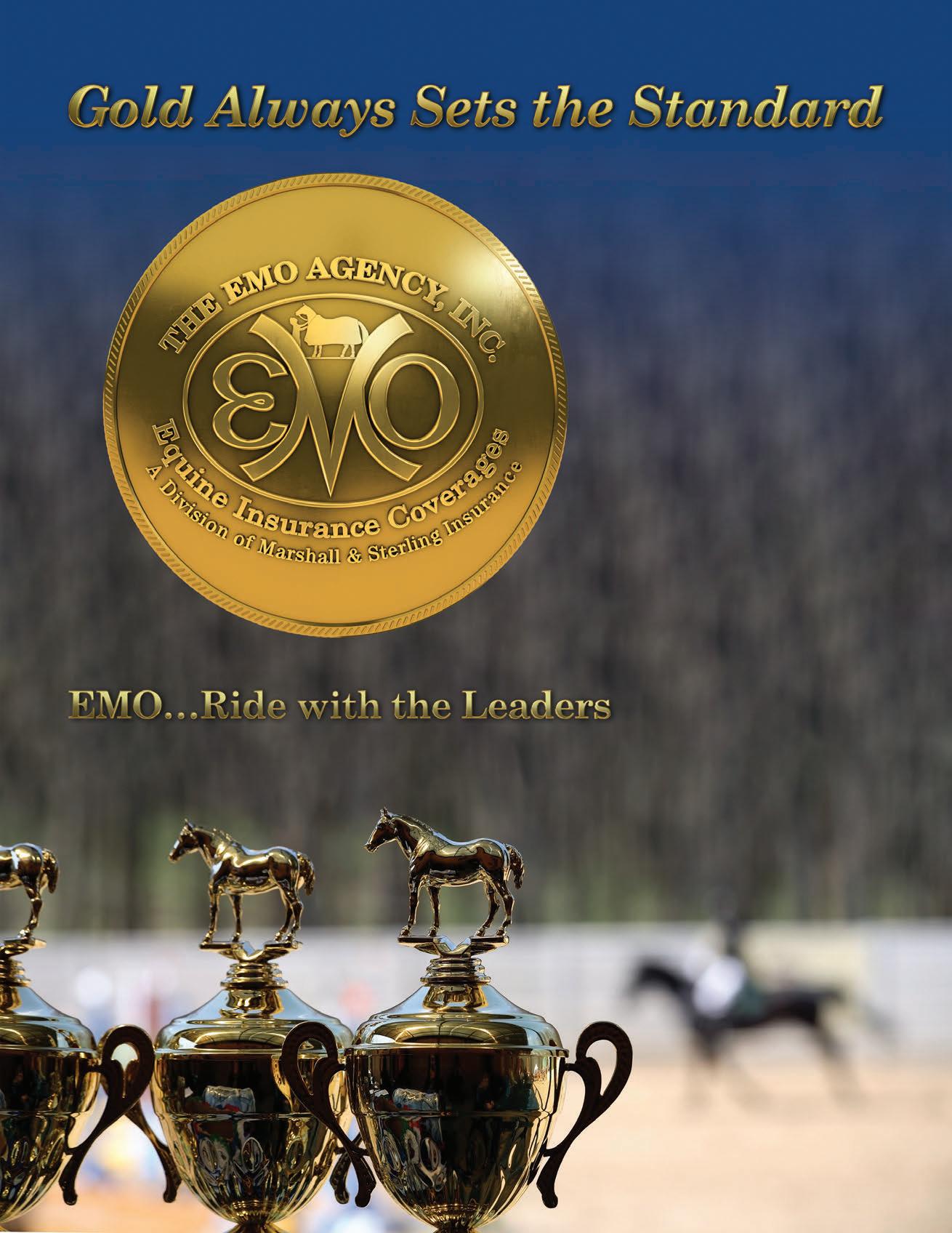
The EMO Agency, Inc. 400 Rosedale Ct., Warrenton, VA 20186 National 800-347-3552 West Coast 818-848-0443 www.RIDEEMO.com Top-rated underwriters with time-tested products… providing excellent service for more than 40 years.



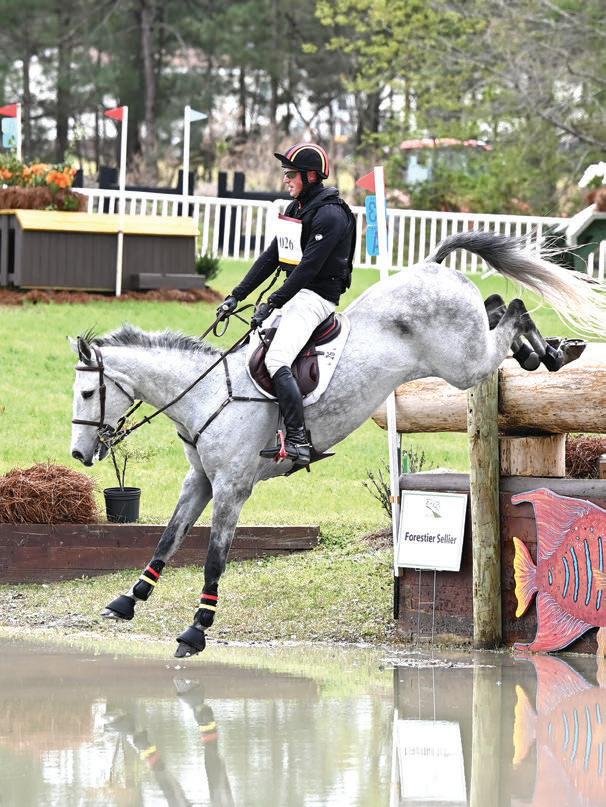



7 LETTER FROM THE EDITOR 8 CAROLINA HORSE PARK 18 OUT & ABOUT 22 UNDER 21: LAINIE RUBIN 26 FOALING: MARE OWNER'S GUIDE 34 CAROLINAS EQUESTRIANS 38 GO GREEN 48 INDEX OF ADVERTISERS 50 PARTING SHOT 38 26 8 34 6 The Carolinas Equestrian Spring 2023
IN THIS ISSUE
Spring 2023 Volume 9, Issue 1
Editor Lauren Allen
Publisher
Pam Gleason
Layout & Design Larchwood Productions
Contributors
Lauren Allen
Reed Edwards
Pam Gleason
Tyler Graham
Carmen Jacobson
Gary Knoll
Jessica O'Connor
Jen Roytz
Advertising
Lauren Allen
803-240-1275
Pam Gleason
803-643-9960
Ashley Haffey 607-743-1309
General Inquiries
Lauren Allen 803-240-1275
thecarolinasequestrian@gmail.com
Cover
Elizabeth Halliday-Sharp riding
Miks Master C in the Carolina International CCI4*-S, Carolina

Horse Park, Raeford, North Carolina.
Photography by Pam Gleason

From the Editor
Spring has sprung: the grass grows green again, flowers blossom, and precious fluffy foals are born. It’s a time to celebrate birth and rebirth.
The Carolina Horse Park in Raeford, North Carolina is commemorating 25 years of amazing growth and excellent equestrian competitive offerings. We seized the opportunity to write about the facility and attend the Setters' Run Farm Carolina International, a prestigious competition that attracts world class eventing riders from around the nation. Originally designed for eventing, the park has become an indispensable show ground for hunters, dressage and competitive combined driving. The park takes its guardianship of the 315 acres of green space it inhabits seriously, inviting everyone who visits to appreciate and conserve our natural landscapes.
Horses (and their owners) value verdant landscapes, and Reed Edwards combines his education in chemistry with his expertise as a horseman to grow luscious pastures and to harvest prize-winning hay. In “Go Green,” he shares his advice on how to maximize your acreage.
Foaling season is in full bloom, and although most mares deliver without issue, any deviation from a textbook delivery is a critical emergency. Being able to recognize and resolve problems quickly is crucial. Jen Roytz’s “Foaling: A Mare Owner’s Guide” offers preparatory advice for mare owners and first time breeders.
Equestrians of the Carolinas introduces readers to Mark and Sandra Myers who created the Black Cowboy Festival in Rembert, South Carolina. They are celebrating African American history and horsemanship with people of all races, and their 26th event is scheduled for May 25-28. Read what led them to be so passionate about sharing what they have learned on their journey, and about their upcoming festival plans.
Like us on Facebook: The Carolinas Equestrian Magazine




Twitter: TheCarolinasEQ
Intragram: CarolinasEquestrianMag
Web: TheCarolinasEquestrian.com
The Carolinas Equestrian (TCE)
1176 Old English Road Lugoff, SC 29078
Our Under 21 profile features Lainie Rubin, a junior rider from Columbia, South Carolina and a bona fide “influencer” on social media with a popular Instagram presence.
In our photographic collage “Out and About” we showcase equestrians from a variety of disciplines and venues across the Carolinas. In this issue riders are pictured from the Aiken Horse Show in the Hitchcock Woods, the Palmetto Paint Horse Club Show at the South Carolina Horse Park in Camden, and Progressive Show Jumping at Mullet Hall in Charleston.
As always, please don’t hesitate to reach out to us through our website at TheCarolinasEquestrian.com or on Facebook or Instagram and tell us about people we need to talk to, events we need to cover, or places we need to go see.
Lauren Allen, Editor
part of this publication may be reproduced in any form without the express written consent of the copyright owner.
Carolinas Equestrian does not necessarily endorse the views and perceptions of contributors or advertisers.
No
The
The Carolinas Equestrian is owned by The Carolinas Equestrian LLC.
The Carolinas Equestrian 7
A Quarter Century at The Carolina Horse Park
The Carolina Horse Park in Raeford, North Carolina was founded in 1998 because local eventing enthusiasts needed a new place to run the Southern Pines Horse Trials. Twenty-five years later, it is the site of the Setters’ Run Farm Carolina International CCI and Horse Trials, and much more. With a full schedule of horse shows in a variety of disciplines, it has become a beloved Carolinas destination, not just for horse people, but for nature-loving members of the community.
 By Pam Gleason
Gary Knoll
Will Coleman and Chin Tonic HS on the way to victory in the tenth annual Setters’ Run Farm Carolina International CCI 4*-S
By Pam Gleason
Gary Knoll
Will Coleman and Chin Tonic HS on the way to victory in the tenth annual Setters’ Run Farm Carolina International CCI 4*-S

 Gary Knoll
Gary Knoll
Setters’ Run Farm Carolina International CCI4*-S
When it comes to eventing at the Carolina Horse Park, it seems that Will Coleman can’t be beat. Coleman made it three in a row in the Yanmar America CCI 4*-S at the Setters’ Run Farm Carolina International on March 19, 2023, when he cruised to victory in the prestigious eventing competition. His mount this year was the 11-year-old Holsteiner gelding Chin Tonic HS, owned by Vickie Castegren of the Hyperion Stud. Coleman took home the top prize in 2021 aboard Off the Record and won with Dondante in 2022.
“I feel like a pretty lucky guy,” said Coleman after his win. “Mostly, I’m just proud of the horses and our team, our program, and my wife, staff, coaches, vets, farriers . . It takes a village and I’m thankful to have a really nice group of people helping me.”
Will and Chin Tonic certainly made it look easy, finishing on their dressage score of 19.4, which set a record for the lowest score ever at the
competition. They were flawless in the stadium, and then hit the cross-country finish line exactly on the optimum time, making them one of a handful of combinations to avoid time penalties over Ian Stark’s challenging track. “I think the key to getting the time here is to be pretty efficient and quick in the beginning, because that’s the most open part of the course,” said Coleman. “I thought Chin Tonic was great through that whole section.”
Elizabeth Halliday-Sharp was second on her spectacular up-and-coming mount Miks Master C (owned by Ocala Horse Properties), while Will Faudree, a Southern Pines local, was third on the 16-year-old Irish gelding Pfun owned by Jennifer Moser. Faudree and Pfun were also third in 2021 and 2022: they had their own “three-peat.”
The Carolina International was celebrating its tenth anniversary this spring, and the event was an important preparatory outing for the Land Rover Kentucky CCI5*, one of just two 5-star eventing competitions in North America. In addition to the

Spring 2023 The Carolinas Equestrian 11
Above: Will Coleman accepts the winner's check from Jon Richardson, who is the Director of the Rural Lifestyle division for Yanmar America, the sponsor of the CCI4*-S at the Setters’ Run Farm Carolina International.
Left: Southern Pines favorite Will Faudree and Mama’s Magic Way slip through the keyhole.
Eventing Nation
featured CCI4*-S, Carolina also had CCI1*, 2* and 3* divisions, as well as National horse trials from Training through Advanced. It brought in some 230 entrants from around the region.

Heart of the Horse Park
The Carolina International may be the best-known competition at the Carolina Horse Park, but it is far from the only attraction. In fact, the park holds equestrian events 35 weekends of the year in a variety of disciplines and for horses and riders of all levels.
It is true, however, that eventing is at the heart of the park and is its reason for being. Lefreda Williams, who is currently on the CHP board of directors, was one of the founders of the park 25 years ago. An eventing rider, she relocated from her native Ohio after coming to Southern Pines one spring to train with her friend and coach, the legendary Olympic eventing rider Mike Plumb. Plumb had a winter training base in the area, as did the renowned United States Eventing Team member Denny Emerson. In the late 1980s, Williams founded the Southern Pines Horse Trials, which were run annually on the grounds of the Walthour-Moss Foundation: 4,000 acres of conservation land that serves as the home base for the Moore County Hounds, the oldest foxhound pack in North Carolina. By the middle 1990s,
the horse trials had outgrown the Walthour-Moss Foundation property, which was not set up as a competition venue. It was clear that the local eventing community needed its own space.
“We started looking for land in Southern Pines first,” said Williams. “But first of all, land in Southern Pines was very expensive and we couldn’t afford it, and second there wasn’t really a piece big enough for us. Then Denny Emerson found this land for sale in Raeford, about nine miles away, and it looked to be perfect: it had some open land and some terrain to it, and we decided to try to build a horse park there.”
Roger Secrist, a businessman turned land developer whose wife Mari was also an eventer, joined Williams in her efforts, and in 1998 they founded the Sandhills Equestrian Conservancy (now the Carolina Horse Park Foundation), a 501c3 charitable organization that raised money to buy the property and start building the park. They hired Captain Mark Phillips, then the chef d’equipe of the United States Eventing Team, to design the cross country course, which had levels all the way to Advanced. The Southern Pines
Horse Trials moved to its new facility in 2001.
The following year, 2002, the Longleaf Pines
Horse Trials, the oldest horse trials in North Carolina, relocated to the park from a private farm, and the year after that, the Five Points Horse

12 The Carolinas Equestrian Spring 2023
High Time Photography
The War Horse Event series has levels for everyone.
Sedgefield in the Park provides ample hunter/jumper opportunities
Carmen Jacobson Photography
Trials held its first event there. In 2004, the park was the site of the inaugural United States Eventing Association American Eventing Championships, which are now awarded to different locations around the country. Today, the CHP also holds its own schooling events called the War Horse Event Series. This series “provides horses and riders at every level the building blocks to improve their skills,” with divisions starting at “Green as Grass,” and going up to Modified. There is a schooling day on the Saturday before each Sunday show, allowing riders to practice any phase of the competition, and riders may elect to ride all three phases or do a combined test or dressage test of choice.
As the eventing calendar expanded at CHP, so did the park, adding additional acreage through the years, as well as new world-class arenas, stabling and viewing pavilions. Other disciplines arrived at the park as well. These included the Stonybrook Steeplechase, a historic meet that was revived at the park in 2001 and ran there for 16 years; hunter-jumper shows, dressage shows, and the Southern Pines and Timberland Combined Driving Events, which are annual competitions that attract elite athletes from far and wide. The calendar gained a major addition in 2021, after the Sedgefield hunter-jumper shows, a recognized series with a devoted following, lost their Greensboro, North Carolina venue
to development. The CHP and Sedgefield’s management partnered to run Sedgefield’s nine “C” dates and one USEF “A” date, and now the CHP holds 10 weekends of Sedgefield at the Park, giving hunter jumper riders almost as much prominence as eventers.

All of this is very much in keeping with the horse park’s mission.
“We consider the Southern Pines area to be a three-legged stool for equestrian,” said Bryan Rosenburg, who is the chairman of the CHP Foundation. “There’s the Walthour-Moss Foundation, the Moore County Hounds and the Carolina Horse Park. Those three things together are the backbone of the equestrian community, and it’s why people like to locate here. . . we promote events that support our local equestrian community.”
Community and Conservation
Although horses are at the heart of the horse park, the CHP is also devoted to conservation. The park’s 315 acres includes areas set aside for wildlife and the CHP is committed to good stewardship of the land.
For instance, after a recent acquisition of about 60 acres, the CHP started a prescribed burning program to restore the longleaf pine habitat that is crucial to the survival of iconic Southeast flora
Spring 2023 The Carolinas Equestrian 13
Pics
of You
Dana Diemer, a local whip, drives her pony Clarwood Mack the Knife; Her husband Manny Diemer is the groom. Combined Driving Events such as the Southern Pines and Timberland CDE draw top competitors from as far away as Canada.
and fauna, such as the fox squirrel, which recently reappeared in the area after a long absence. There are educational events at the park to provide information about the environment and local wildlife: falconry and raptor demonstrations, “Lunch with Coyotes,” and an annual Halloween “Bats at Sunset” walk, for instance.

To help promote the connection between the park and the community, the CHP holds an annual Painted Ponies Art Walk and Auction, in which businesses sponsor local artists to decorate 14 life-sized fiberglass horses that are displayed on Broad Street in Southern Pines for seven weeks. The horses are then auctioned off, which has been a successful fundraiser for the park while emphasizing the importance of horses to the area. Events at the park are free to spectators, and the CHP encourages everyone to come out and enjoy a day surrounded by horses and nature. At the Carolina International, for instance, there was a Kid Zone near the parking area with face painting, bounce houses and a climbing tower.
Future plans for the park include expanding stabling, adding more all-weather arenas, and perhaps even a covered arena that would enable the park to include different types of events, such as Western or Arabian shows.


“A covered arena with lights is on our dream list,” said Lefreda Williams, adding that the CHP will need to do quite a bit of fundraising to make this a reality. But covered arena or not, she says she is thrilled with how the park has grown over the years and what it has become: a world class equestrian facility with eight full time staff, a dedicated board of directors and some 400 enthusiastic volunteers without whom the park could not survive.
“It’s just a wonderful place to show,” she said. “There’s always room to lunge or graze your horse; it’s not just rings and barns. It’s peaceful and quiet and there’s perfect footing because we have sandy soil, so even if it rains, you can go out and hardly make a mark in the grass.
"When we started out we had zero money, but we have gotten so much support, and it has just grown and grown. If you go up to the second floor in the Baker Pavilion and look out those windows, the view is astounding. . . it’s something that in the beginning when we decided to take on this project, I don’t think we ever dreamed it was going to be like this. It’s just amazing.”
14 The Carolinas Equestrian Spring 2023
Above: Chip Gentry from Hawk Manor Birds of Prey with a black vulture. The park has regular educational programs for members of the community, including falconry demonstrations, evening bat walks and “Lunch with Coyotes.”
Below: As part of an initiative to make the park a community destination, there are often activities for children, including the Kid Zone and climbing tower at the Carolina International.



Spring 2023 The Carolinas Equestrian 15



The Art of Horsemanship
• World-class equestrian center

• Exceptional equestrian studies program

• National championship team
Your future is bright at SCAD.
To learn more about SCAD equestrian or explore other award-winning programs, visit scad.edu or email admission@scad.edu.
Spring 2023 The Carolinas Equestrian 17
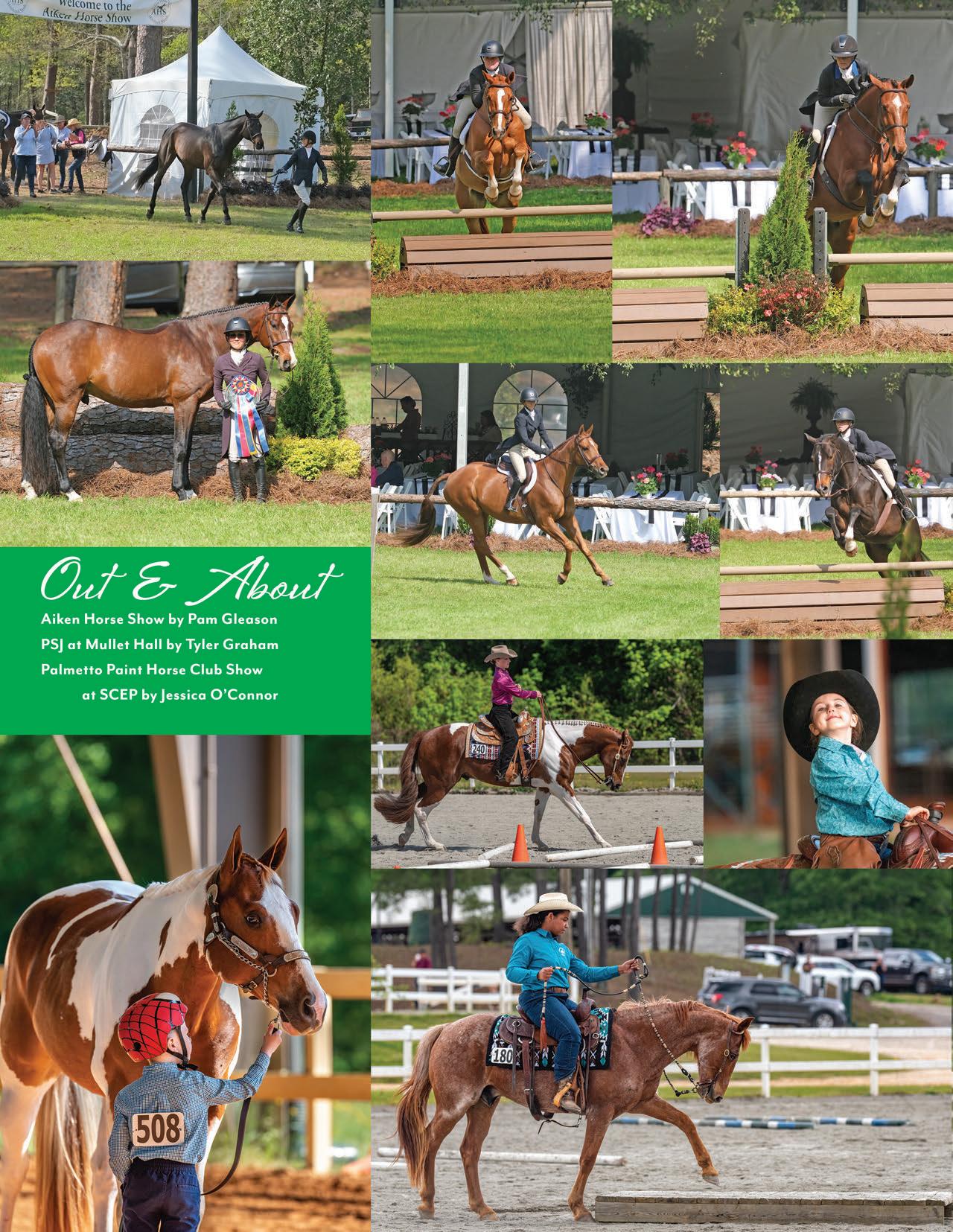
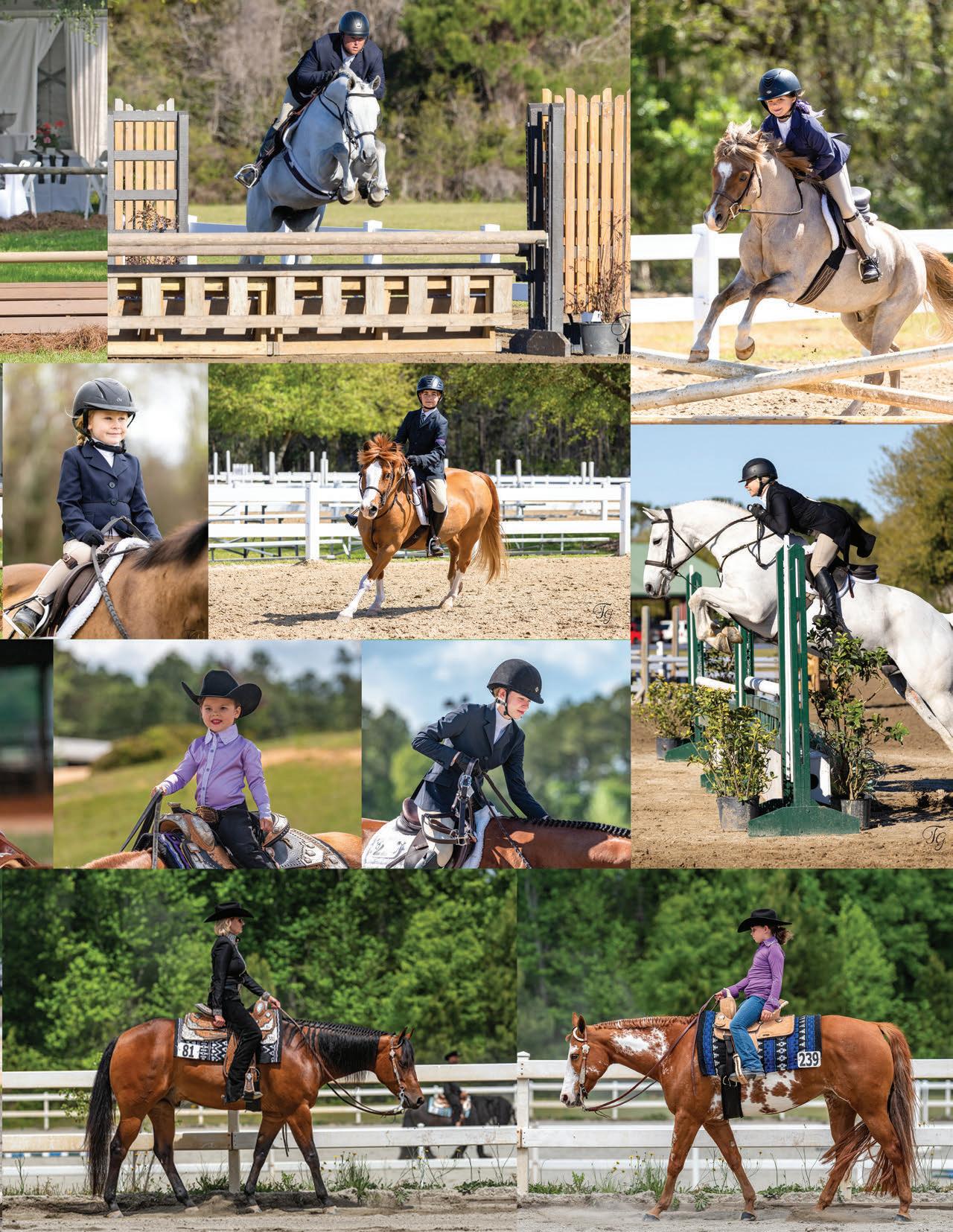



Spring 2023 The Carolinas Equestrian 21
Under 21
Lainie Rubin
Kathryn McLain Rubin, known as Lainie, is the daughter of Hyman Rubin III and Jennifer Wile Rubin of Columbia, South Carolina. Now 18, Lainie started riding as soon as she turned 6 — old enough to be allowed to take lessons at Rose Marie Landrum’s stable in Blythewood, South Carolina. Her mother, Jennifer Rubin, rode as a junior and wanted to get back to riding after having children, so she and Lainie would go to the barn together, and their commitment to everything equine only grew from there. Lainie began leasing and showing a pony at the age of 7, and the pony bug took a strong hold of her and her mother, who has supported and documented Lainie’s riding career enthusiastically, contributing her photos and videos to Lainie’s Instagram account which has over 15,000 followers.
“We started my Instagram account in 2017 when I had a medium pony named Makloud,” says Lainie. Makloud qualified Lainie for her first United States Equestrian Federation Pony Finals in 2017. Then she acquired and showed a young German Riding Pony named Luck Dragon in the Large Green Pony division and qualified for Pony Finals again in 2019, finishing 20th overall. Luck Dragon’s sale then financed a series of green ponies that each contributed to the purchase of Lainie’s first full-sized horses. From there she graduated to the Junior Hunter classes and Equitation Medals, completing 2023 with wins in the SCHJA Palmetto Medal Final and the

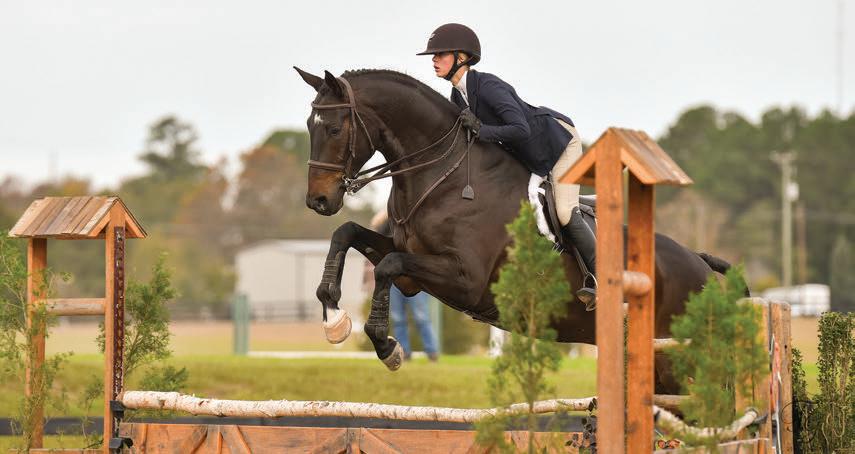
Progressive Show Jumping Medal Final on her tall dark Hanoverian named Space Cowboy.

“The Instagram account really exploded during [COVID] quarantine because a lot of people were just sitting at home and watching videos. I had several ponies at the time and I tried to post, definitely the wins, but also some of the training issues that we had and how we’ve worked through them and it’s helped me to connect with a lot of different people. It’s really great to be able to look back at all the memories, especially with horses being less of a focus in college,” she says.
Lainie plans to ride on the Intercollegiate Horse Shows Association team of the College of Charleston when she attends the Honors College in the fall, but does not plan to bring a horse of her own. She intends to study international relations or political science, and would like to study abroad and maybe earn a political internship. She hopes to attend law school after earning her undergraduate degree.
“The most important thing that horses have taught me is adaptability: learning to approach a problem as something exciting to solve instead of something that hampers forward progress. The biggest thing with the green ponies was each one would have difficulties and I would get frustrated. It wasn’t until I learned to approach it like a little puzzle that I could figure out, and learn from each horse what they wanted and what I could do better myself to help them succeed, that I started to grow as a rider.”
Jessica O'Connor Photography
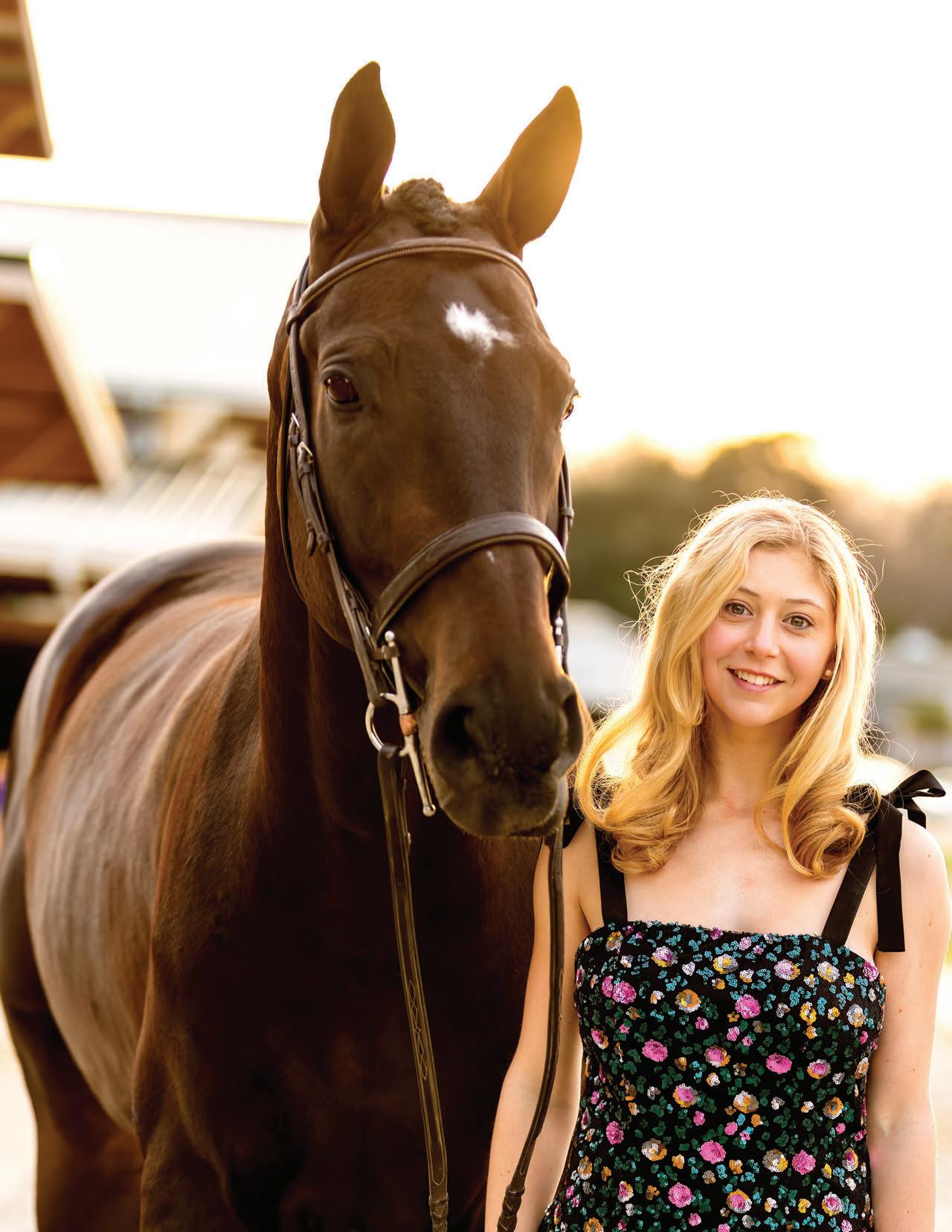







Spring 2023 The Carolinas Equestrian 25 YOUR EQUINE DESTINATION FOR QUALITY AND SERVICE FOR THE PAST 40 YEARS. 803-649-6583 1090 East Pine Log Road, Aiken, SC 29803 www.aikensaddlery.com Exclusive Clothing, Gifts and Sporting Art 126 Laurens Street SW Aiken, SC 29801 803.642.9772 equinedivineonline.com
Foaling: a Mare Owner’s Guide
What to expect when the big day approaches
By Jen Roytz
The birth of a foal is the culmination of a year or more of planning, spending, anticipating and finally, waiting. Regardless of whether the foal-to-be will be raised for a competition career or a recreational one, it is an emotional investment as much as it is a monetary one.
With so much at stake, you want to ensure you are doing everything possible to help your future foal develop both healthy and strong. How a mare is cared for during her pregnancy and how the foal is managed during and in the days after delivery can play a significant role in a young horse’s future health and soundness.
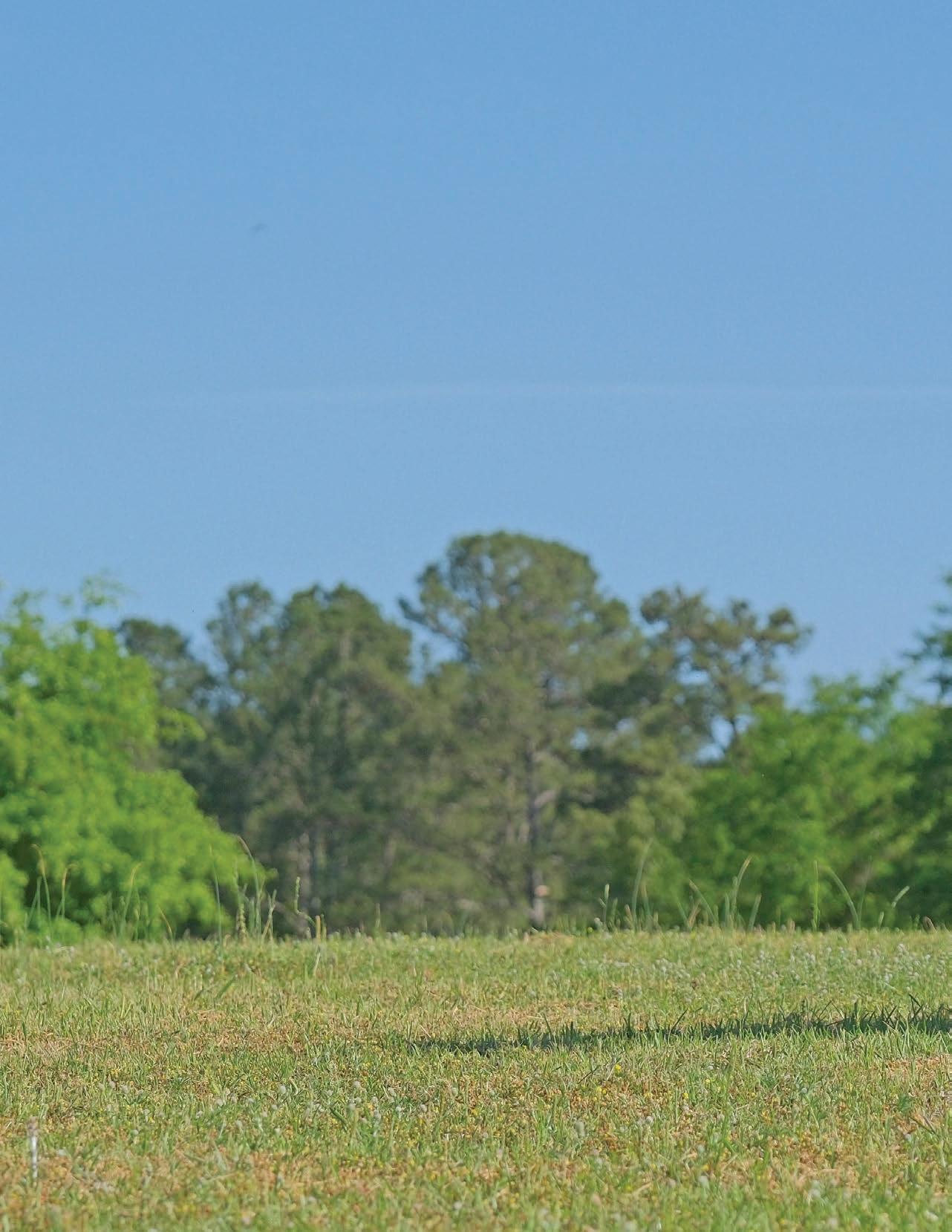 Pam Gleason Photography
Pam Gleason Photography
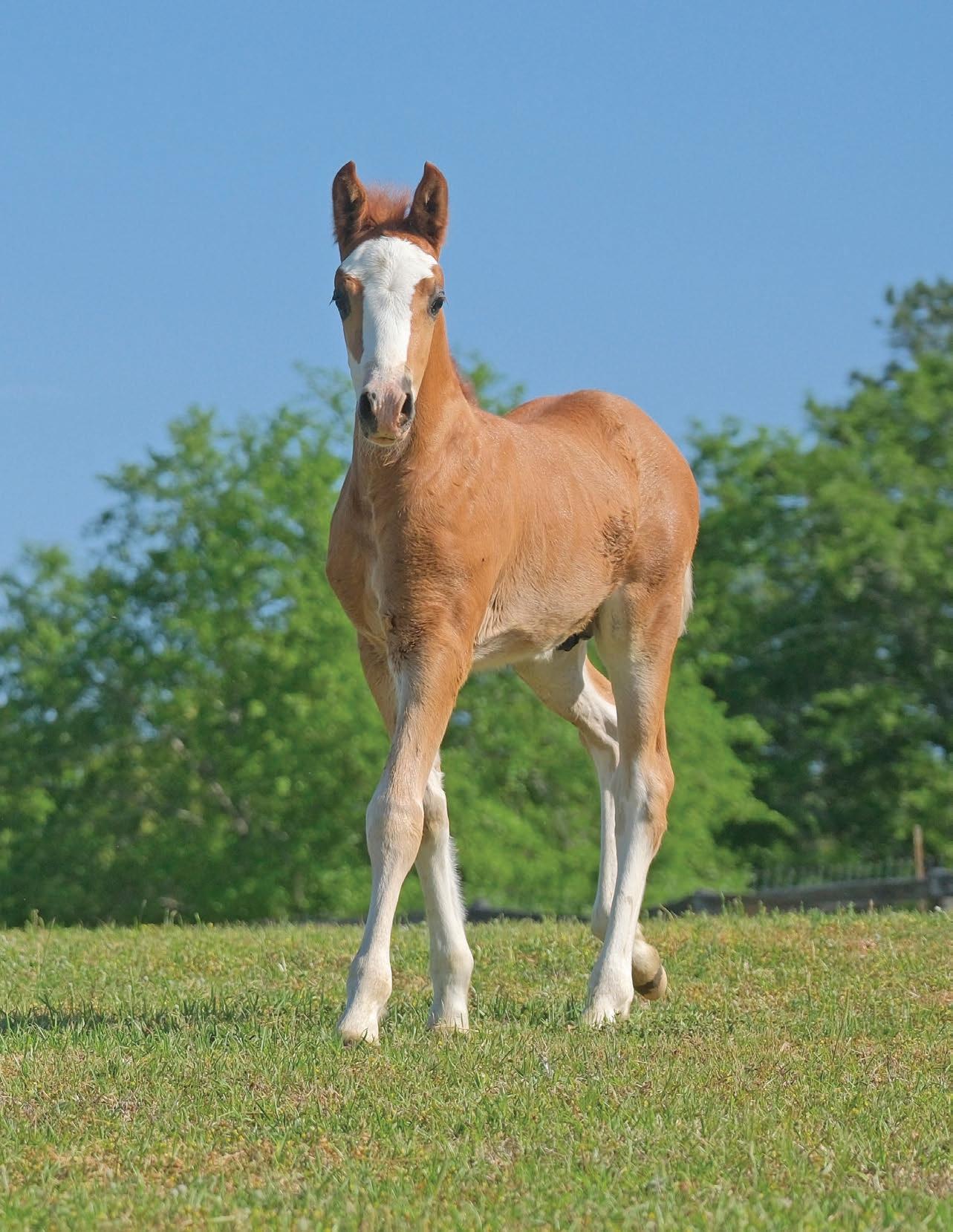 Orchard Hill Ponies Aiken, South Carolina
Orchard Hill Ponies Aiken, South Carolina
Getting & Keeping Your Mare in Foal
Dr. Rachelle Thompson of Performance Equine Vets in Aiken, South Carolina specializes in internal medicine with extensive experience in equine neonatal care and in managing high risk pregnancies. She says that working closely with your veterinarian to create a breeding plan tailored to your mare is the best way to ensure success.
“Your veterinarian can evaluate your mare’s breeding history, her conformation, and assess her reproductive tract with an ultrasound exam and then recommend the breeding method that is most likely to be successful for your mare,” said Dr. Thompson. “Some mares are able to be bred via artificial insemination and carry a foal to term successfully. If your mare has struggled to keep her pregnancies in the past or has a predisposing factor, your veterinarian may recommend embryo transfer or ICSI [intracytoplasmic sperm injection] as an alternative that would have a higher chance of a successful pregnancy.”
However your mare is bred, a pregnancy exam should be conducted roughly 14 to 16 days after breeding to confirm the pregnancy or make a plan to try again. A mare who isn’t already pregnant will

generally come back into heat about three weeks after her last heat, often less than a week after this exam, and will only be receptive to breeding for about five to seven days. If you want to maximize the chance of getting a foal next year, then breeding her back right away is a good idea.
Nutrition can play a vital role both in getting a mare into foal and in the development of a fetus during gestation. Mares should have a Body Condition Score somewhere between 5 and 7 on the Henneke scale – between an ideal weight and “fleshy.” They should have high quality forage from either pasture or hay, as well as a source for essential vitamins and minerals, either from concentrated feed specially formulated for broodmares or from a ration balancer.
It is also important to consult with your veterinarian to maintain an appropriate vaccination schedule based on your mare’s geographic and herdbased risk factors.
“Mares should receive vaccinations for Tetanus, Eastern Equine Encephalitis (EEE), Western Equine Encephalitis (WEE), West Nile Virus, Rabies, Equine Herpesvirus (labeled for respiratory disease), and
28 The Carolinas Equestrian Spring 2023
Before breeding your mare, schedule a breeding soundness examination with your vet.
Influenza 4-6 weeks before their due date,” said Dr. Thompson. “This booster helps the mare create extra antibodies which will be deposited in the colostrum that will transfer to the foal at birth. All of these vaccines should be killed vaccines, as modified live vaccines should never be administered to pregnant animals.”
It is also important, according to the American Association of Equine Practitioners (AAEP) vaccination guidelines, that mares be vaccinated with a product labeled for the prevention of abortion due to Equine Herpesvirus in months 5, 7, and 9 of gestation in order to protect both themselves and their baby.
The Night You’ve Been Waiting For
There is a saying among horse people that “the foal chooses the day, but the mare chooses the hour.” As animals of prey, most mares choose to deliver their foals at night.
In the weeks prior to foaling, a mare will show signs that her body is preparing to give birth, including udder development, relaxation of the muscles of the croup, tail head, buttocks and lips of
the vulva. Two to four days before she foals, a mare will often start waxing, referring to the dried beads of colostrum that will form on her teats.
There are three distinct stages of labor when a mare foals:

Stage 1: As the mare’s body prepares for delivery, she will become uneasy, lying down and getting up frequently, sweating, and urinating. This can last for two to three hours and will culminate with her water breaking, releasing several gallons of amniotic fluid.
Stage 2: In the active parturition stage, the mare’s uterine contractions will increase, her cervix will dilate and she will normally lie down to push out her foal. In an ideal foaling you will first see the front feet (one foot slightly ahead of the other), followed by the nose and shoulders. It is common for a mare to take a brief rest at this point before pushing the remainder of the foal’s body through the birth canal. This stage should last roughly 15 to 30 minutes. If it takes longer than that, or if the foal’s presentation is abnormal, you should call your veterinarian.
Stage 3: After the foal has been delivered, the mare will need to pass her placenta. As the mare gets up
Spring 2023 The Carolinas Equestrian 29
If the foaling was uneventful, the mare and foal should be given time to rest and bond.
Foaling Kit

• Latex Gloves: For handling the placenta and to wear when handling the newborn foal
• Vetwrap: Used to wrap the mare’s tail and keep everything clean during labor.
• Clean towels: Used to clean the foal and mare after delivery.

• Headlamp or flashlight
• Pen and paper: To keep track of the times of pertinent events such as water breaking, foal delivery time, the time it takes the foal to stand, placenta passage, and so on.
• Sharp scissors: Used in the case of a red bag delivery. This occurs when the placenta separates prematurely and the foal is deprived of oxygen. The scissors should be used to cut the red bag open and get the foal’s nose exposed so it can breathe.
• Clean bucket and rag: This is used to clean the mare’s udder of any debris after birth prior to the foal nursing.
• Plastic bag or bucket: This is used to save the placenta for examination by the veterinarian.
• Dilute chlorhexidine solution & clean dipping cup This should be used to dip the foal’s umbilicus after birth. Thompson recommends a dilution of one part 2% chlorhexidine solution to three parts water.
• Fleet enema: This enema can be administered to a foal shortly after birth to facilitate the passage of meconium, the foal's sticky first stool. This enema should only be given once and should not be repeated. If your foal is straining after one enema, consult your veterinarian.
• Thermometer: This can be used to take the foal’s temperature after birth especially in cold weather. A normal foal’s temperature should be between 98-102F.


• Ivermectin: It is recommended to administer a dose of Ivermectin to the mare at the time of foaling.
• Banamine: It is recommended to have a dose of Banamine on hand for the mare if she becomes mildly colicky after foaling or has a painful udder when the foal is nursing.
30 The Carolinas Equestrian Spring 2023
In the weeks leading up to your mare’s due date, it is advisable to put together a foaling kit so you have everything you might need during the foaling process within reach.
Jen Roytz Photography
from foaling, the placenta should be knotted to prevent the mare from stepping on it. It is important not to pull on the placenta, as it will still be attached to the uterus. It should pass within three hours and should be laid out and visually inspected to ensure it has all been expelled. Retained placentas (all or part of them) can cause serious illness in a mare, so if part or all of the placenta does not pass within this timeframe, you should call the veterinarian.
“Most mares do not require any assistance during the delivery process,” said Dr. Thompson. “It is best to leave the mare undisturbed as much as possible, however there are some times when veterinary intervention is necessary to save the life of the foal.”
It is important to know and be able to recognize the difference between a routine foaling and a dystocia, which is the general term for difficulties in foaling occurring in either the first or second stage of delivery. In such situations, every minute counts.
“The most emergent situation would be a red bag delivery,” said Thompson. “If a velvety red sack is present at the mare’s vulva, this is a sign of early placental separation. This bag needs to be cut open immediately and the foal’s nose needs to be exposed

and cleared of membranes so it can breathe.”
Another common cause of dystocia is the abnormal presentation of the foal, preventing the foal from passing through the birth canal. Situations in which the foal presents upside down, with only one leg in front of its nose, its legs without the nose, its hind legs first or the head without the front legs will require intervention.
“If there are any signs of improper positioning, it is recommended to call your veterinarian immediately,” said Thompson. “Pulling on the foal to assist with delivery is not advised, as there is a high risk of injuring the mare if performed improperly.”
If the foaling was uneventful, the mare and foal should be given time to rest and bond. It is important not to cut the umbilical cord, rather allowing it to break when the mare or foal stands on its own.
“We use the 1-2-3 rule to gauge the normal events that should occur after foaling,”explained Dr. Thompson. “Within one hour after birth, the foal should be standing without assistance. Within two hours, the foal should be nursing from the mare’s udder. Within three hours, the mare should have passed her placenta.”
Spring 2023 The Carolinas Equestrian 31
Within two hours, the foal should be nursing from the mare’s udder.
Foal Exam and First Days
Scheduling a new foal exam with your veterinarian within the first 12 to 24 hours after birth is an important next step for both the mare and foal. In this examination, the veterinarian will check the foal for any congenital abnormalities or injuries sustained during foaling and to verify that it received enough of its dam’s antibodies from her colostrum so it will have adequate immunity for the first four months of its life.

The veterinarian will also check the mare for signs of trauma post-foaling and milk production, as well as examine the placenta to ensure it was passed entirely and was healthy.
“The foal exam will include a detailed assessment of the heart, lungs, eyes, ears, joints, umbilicus and gastrointestinal tract,” said Thompson. “We also recommend a bloodwork assessment, including a complete blood count, to assess white blood cell counts, creatinine, to ensure normal kidney function, and an IgG to ensure adequate antibody transfer.”
For foals born before 330 days gestation, which are classified as premature foals, Thompson recommends her clients have radiographs taken of the knees and hocks to ensure their bones are fully formed.
“We recommend deworming the mare with Ivermectin at the time of foaling to prevent transmission of Strongyloides westeri,” said Dr. Thompson. “This parasite can be transmitted from the mare to the foal through the milk and cause diarrhea in the foal.”
Based on the findings of the new foal examination, your veterinarian will advise you on a plan for introducing the new mare and foal to turnout.
“My best advice for caring for neonatal foals is to provide early intervention when there is a problem,” said Dr. Thompson. “Know the normal milestones that a foal should meet in the first few hours of life and contact your veterinarian immediately if the foal does not meet these marks.”



Spring 2023 The Carolinas Equestrian 33
Equestrians of the Carolinas

Mark and Sandra Myers
Founders of the Black Cowboy Festival
Mark and Sandra Myers both descend from generations of African American farmers and sharecroppers in South Carolina. In 1991 they purchased land in Rembert, South Carolina that was once a plantation and still houses the cabin where Sandra’s three-times great grandmother, who was enslaved, lived and raised 10 children. The property is now the site of their home, farm, and their annual Black Cowboy Festival. This year will be the 26th anniversary of the homegrown African American cultural festival that draws people of all races and from all over the United States. Mark and Sandra Myers are committed to sharing the gift of horses with the youth of their community and with anyone who is open to learning about the history of Black horsemanship that they are seeking to recover and reclaim.
“Mark always had this dream of owning horses and being a cowboy,” Sandra says. “As a kid, he watched Bonanza on television, and he loved that way of life but he didn’t see African Americans on TV as cowboys; you didn’t read it in the history books. But we knew there had to be other African Americans doing what we loved doing. So, we started travelling and researching – we went to Oklahoma, Texas, Tennessee, different places – and we met many other African Americans who were horsemen and ranchers and cowboys.
“Mark’s desire was to educate our people, and at first, we were just talking about people back home, back here, who didn’t know anything about African American cowboys, but we soon learned that there were people everywhere that didn’t know! The main focus of the Black Cowboy Festival is horsemanship—not just jumping on the back of a horse and being able to ride, but the skill that Black cowboys had during
that cowboy heyday and even today,” continues Sandra.
Why horses? Sandra answers: “When you gain a relationship with a horse you learn how to be patient, how to take care of the animal, a sense of love and communication, things that carry you through your life not just with horses but with people. But the festival is not just about horsemanship, it is about a whole lot of stuff that has to do with our heritage and culture. We wanted to create a resource for education, and at the same time we knew that we would need to pull people in and entertain them, that it had to be about more than horses but also other aspects of African American history, as it relates to art and music.
“Everybody, anybody, any nationality is invited to come and join us in this event,” says Sandra. “A lot of times when people hear 'Black' they think it is just for Black people, but we say Black Cowboy because if we don’t say it, people who don’t know about Black cowboys will think about white cowboys, because that is what they have always seen. As African Americans whose history has been stricken from them, we want to enlighten, not just our people, but anyone who is not aware of our history.”
The 26th annual Black Cowboy festival will take place from May 25-28 in Rembert, South Carolina, beginning Thursday with educational workshops, followed by a fish fry. On Friday there is a trail ride and line dancing classes, and at night a Western dinner and a live band. Saturday has a full day of horse showing in multiple disciplines, including gaited horses, jumping, rodeo and games, and ending with a Motown jam party. Sunday concludes the festival with church and brunch.
For more information: www.blackcowboyfestival.net
34 The Carolinas Equestrian Spring 2023
“When you gain a relationship with a horse you learn how to be patient, how to take care of the animal, a sense of love and communication, things that carry you through your life not just with horses but with people.”
 Lauren Allen Photography
Lauren Allen Photography









36 The Carolinas Equestrian Spring 2023 scequinepark.com Camden SC I-20 Exit 101 Your Camden Showgrounds a 501c3 non-profit organization 288 STALLS WITH RUBBER MATS, 3 EXHIBIT RINGS WITH STATE OF THE ART FOOTING, 2 COVERED ARENAS, FANS, CATTLE PENS, LUNGEING, SCHOOLING, AND VENDOR AREA 443 Cleveland School Rd Camden SC 29020 Mailing Address P O Box 2174, Camden SC 29020 Please contact the Show Manager with questions about their event. Since 2009 For Booking Information Contact Tanja Schnuderl camdenhorseshows@gmail.com or 571-345-6486 scequinepark.com for Event Calendar NAME A STALL We will provide a name plaque to honor your horse. PM facebook.com/SCEquinePark for details. Ask us about NAME A BARN, NAME A RING & MORE! We love to see our visitors showcased across the property! We look forward to seeing you ringside! Check our Facebook Page for Schooling Series Days Not state funded ARENAS The Next Step in Footing SERViCES: • All Weather Arena Footing Installation • Facility & Riding Arena Design Layout • Round Pen Installation • Drainage System Installation • Turf & Polo Field Installation • Laser And GPS Capabilities • Barn Pad Excavation & Installation • Standard Blue Stone Available THE NEXT
iN FOOTiNG Consulting services are available for all aspects of the design and construction of your equestrian facilities. OUR PLEDGE: CB Arenas offers unparalleled peace of mind for all your equestrian facility needs. 973-222-1668 | CBFARMS.US
my arena. Thanks Clint
great
STEP
“Love
for the
work.” ~ Kate Brown, 5* Eventer/Trainer



Spring 2023 The Carolinas Equestrian 37
Make Grass Greener Inside the Fence
by Lauren Allen
The cost of groceries has skyrocketed, and horse owners are paying high prices when it comes to feed and forage for their four-legged babies. The feed budget is not a place where costs can be cut easily, but Reed Edwards has some advice to help keep the grass greener inside the fence. Edwards is a horse trainer and award-winning grower of hay and pasture based at his own FoxPipe Farm in Laurens, South Carolina.


 Reed Edwards on a visit to Aiken.
Pam Gleason Photography
Reed Edwards on a visit to Aiken.
Pam Gleason Photography
“What hasn’t gotten more expensive in the last couple of years?” asks Reed Edwards. “Fertilizer tripled a year ago, and fuel is doing the same thing. When you are a hay producer, fertilizer and fuel are two of your biggest expenses, and that raises the price of the hay bales. Even though I am a hay producer, my focus is just as much on the pasture, so I don’t have to use my hay!”
Edwards won first place in the “Mixed Annual Grass or Other Hay” category in the 2022 Southeastern Hay Contest held at the Sunbelt Ag Expo in Moultrie, Georgia last October. His winning entry was an alfalfa and novel endophyte fescue mix, a combination of grasses and legumes that he likes for the way the two complement each other during the growth and drying processes. He says that the grass helps add spring to the alfalfa and lets air in during curing to dry out the stem without over-drying the leaves. Many horse owners, particularly breeders, have been warned
against feeding fescue because a type of fungus called an endophyte in the cells of this grass can cause reproductive issues. However, Edwards points out that the term “novel endophyte” fescue means that the typical endophyte in the grass has been replaced with a new or different organism that does not have the same negative implications for horses. Endophytes and fescue are mutually beneficial because the endophyte helps the cool season grass resist extreme heat and drought.
In the Carolinas, Edwards says that as far as growing pasture or hay, what types of crop work best is more about the division between East and West than North and South. In the eastern parts of the two states, the soil is sandy and the temperatures are warmer. In the west, there is more clay, and cool season grasses like fescue and orchard grass survive since it is not quite as warm in the summer.

Spring 2023 The Carolinas Equestrian 41
Horses at FoxPipe Farm graze on cool season spring annual forage: spring oats, wheat, barley, and cereal rye. Crimson clover and winter peas were planted this year and hairy vetch, balansa clover, arrowleaf clover, and ball clover are there from previous plantings.
Examine Your Soil
“Here you think of red clay, but my soil looks more like a German chocolate cake,” says Edwards, indicating that the first step in determining what forage to grow and how to support it is to take a soil sample to your local extension agent to see how acidic and how fertile your soil is.
“A soil test shows you the lime and the fertility needs that you have: pH is typically on the acidic side in the Carolinas (low) and lime is going to raise the pH. For pastures you want to be in the ballpark of 6 to 6.5. That applies for most grass hays. But alfalfa and most of the legumes want to be more in the 6.5-7 ballpark. Correcting the pH gives the most bang for the buck when it comes to stuff you might put out. Having the pH in the right range will then make all the fertilizer and the nutrients work.”
Compost is great because it is more of a slowrelease fertilizer, says Edwards, and he points out that in the South there are also a lot of broiler producer chicken houses with a corresponding amount of chicken litter.
“Birds pass through something like 95 percent of the nutrients they are fed because they need to be able to fly, so they don’t want to get heavy.” says Edwards, making chicken litter a rich source of nitrogen.
Grass & Legumes

“A lot of times the annuals are more forgiving of poor fertility,” continues Edwards. “Legumes are a favorite of mine because when you think about a grass field, grass needs nitrogen to grow. Nitrogen is kind of a fleeting nutrient. You put it out there, you use it up, you put it out again –every cutting, if it’s a hay field; every few months in a pasture. But legumes will pull nitrogen out of the air and put it to use; they’ll leach some of it into the soil for other plants to use, and if you are grazing it, the animals will use it as protein, and then give it back in their manure.”
Edwards says that commercial nitrogen fertilizer causes soil pH to drop, which means you need to go buy more lime. An additional benefit is that legumes such as alfalfa are high in food value, so animals get more nutrition and energy from legumes in the pasture.
Edwards has a legume he likes more than alfalfa for hay, a plant called lespedeza that he says is soft and palatable for horses, grows well in the warm season, and reseeds itself without requiring the frequent spraying that alfalfa demands for weed and pest control. He also has a favorite cool season grass called prairie brome. In cooler climates, prairie brome is a perennial grass, but in the Carolinas it is an annual. However, Edwards says that prairie brome
42 The Carolinas Equestrian Spring 2023
Horse pastures in the Carolinas are often managed for a single type of forage, such as Bermuda or Bahia grass, with perhaps a cool season crop of annual ryegrass. But there are many additional nutritious options for pastures, including different varieties of clover, and other legumes such as alfalfa and lespedeza, both of which have subspecies optimized for grazing. Consult your local extension agent to discover what might work for you.
reseeds itself well and is extremely palatable and incredibly soft textured.
Ideally the different grasses and legumes planted in a pasture have different seasons, so each month there is something new coming in and forage production is not peaking and falling off, but forming more of a straight line where there is always something growing for the horses to eat. For example, fescue is a cool season grass that will thrive in the western Carolinas in the spring until around June. Bermuda grass grows well in the warm season, so it will pick up when the fescue is slowing down and grow throughout the summer. Heading into fall when the Bermuda growth slows down, the fescue wakes back up again.

Agricultural no-till seed drills and heavy tractors are large and expensive and can be hard to get hold of at the necessary times. Edwards says he keeps trying to encourage someone to come up with a reasonably priced seed drill implement
that will fit a regular tractor the way a bushhog does. But he adds that there are some seeds that can be effectively broadcast, such as annual ryegrass and crimson clover in the fall, and crab grass or hairy indigo in the spring.
Having a variety of plants is good for more than just grazing, according to Edwards. When you look at a plant in the field, there is approximately as much of it below the ground as there is above it, and the deeper the roots the longer that plant can hold out in dry conditions. It varies from sandy soil to clay, but there is a saying that you’re always two weeks from a drought. Roots and organic matter turn the soil brown or black rather than red or white, and increasing organic matter even by 1% will help the soil hold onto the equivalent of a half inch of rainfall, which could help a pasture go another week or two during a dry spell. Having organic matter over the ground lets the water infiltrate, instead of running off.
Spring 2023 The Carolinas Equestrian 43
Horses grazing on summer annuals at FoxPipe Farm. The pasture is divided by polywire and the forage includes Sunn Hemp and sunflowers.
Controlling the Weeds
There are three types of plants that might grow in a pasture: grasses, legumes (broadleaf plants that fix nitrogen) and non-legume broadleafs: annuals like flax, turnips and radishes, and perennials like chicory or plantain. When you have all three types of plants growing, that doesn’t leave you any herbicide to spray with, because the weeds also are going to fall into those three categories.
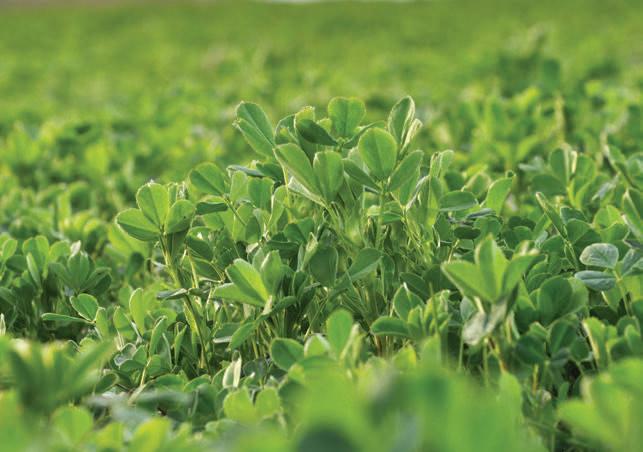

“A weed is merely a plant that is growing where you don’t want it to grow,” says Edwards. “A tomato in the garden is desirable; in the pasture it is a poisonous plant. A lot of the pasture products have a residual effect to keep the weeds from coming back, but that also will take out your clover.” Edwards plants fescue and orchard grass, and also brome, timothy and a couple of what he calls “oddball grasses.” He says he probably has seven or eight types of clover, along with chicory and plantain.
“Five years ago I did the Grazon in the spring and sprayed some 24D in the fall which takes out broadleaf weeds, but it is pretty much a contact spray. And since then, I have been trying to crowd out the weeds with competition. At some point I will have to do a cycle of weed control and that will take out my clover.” He estimates that if his pasture was only grasses, he would have had to spray more regularly. “Spraying with herbicides is one avenue, it just seems like it never ends.”
Rest & Rotate
Edwards suggests dividing pastures and paddocks with electric polytape so that you can give a space time to rest, recover and go to seed. How long to rest an area varies according to how quickly the grass is growing, and how fast the horses are grazing it down.
“My base model now is my pastures are all about 10 acres: I used to put 10 head of horses out on the 10-acre field and I would leave them for about a month. But what would happen was some of the stuff would get mature and they would leave it, and other areas would be shorter than the carpet of your living room. So, in a month those areas hadn’t had enough rest to catch up, and then you had to run the bushhog to cut down the tall stuff. Now I put 10 head of horses on about half an acre for two days . . . it takes about a month to go across the field, but now the first strip has had 28 days of rest and it is ready to go again.”
For pasture owners interested in more resources, Edwards recommends contacting a local agricultural extension agent and attending equine pasture workshops where available. Edwards suggests following the Clemson Extension Livestock and Forages page on Facebook and he also recommends the page “Forage Drops” created by Dr. Liliane Silva, who is a forage specialist and a professor at Clemson University.

44 The Carolinas
Spring 2023
Equestrian
White clover: Broadleaf herbicides would kill this forage. Many people don't realize that alfalfa can grow well in the Carolinas, and there are varieties that are adapted to grazing as well as to hay.


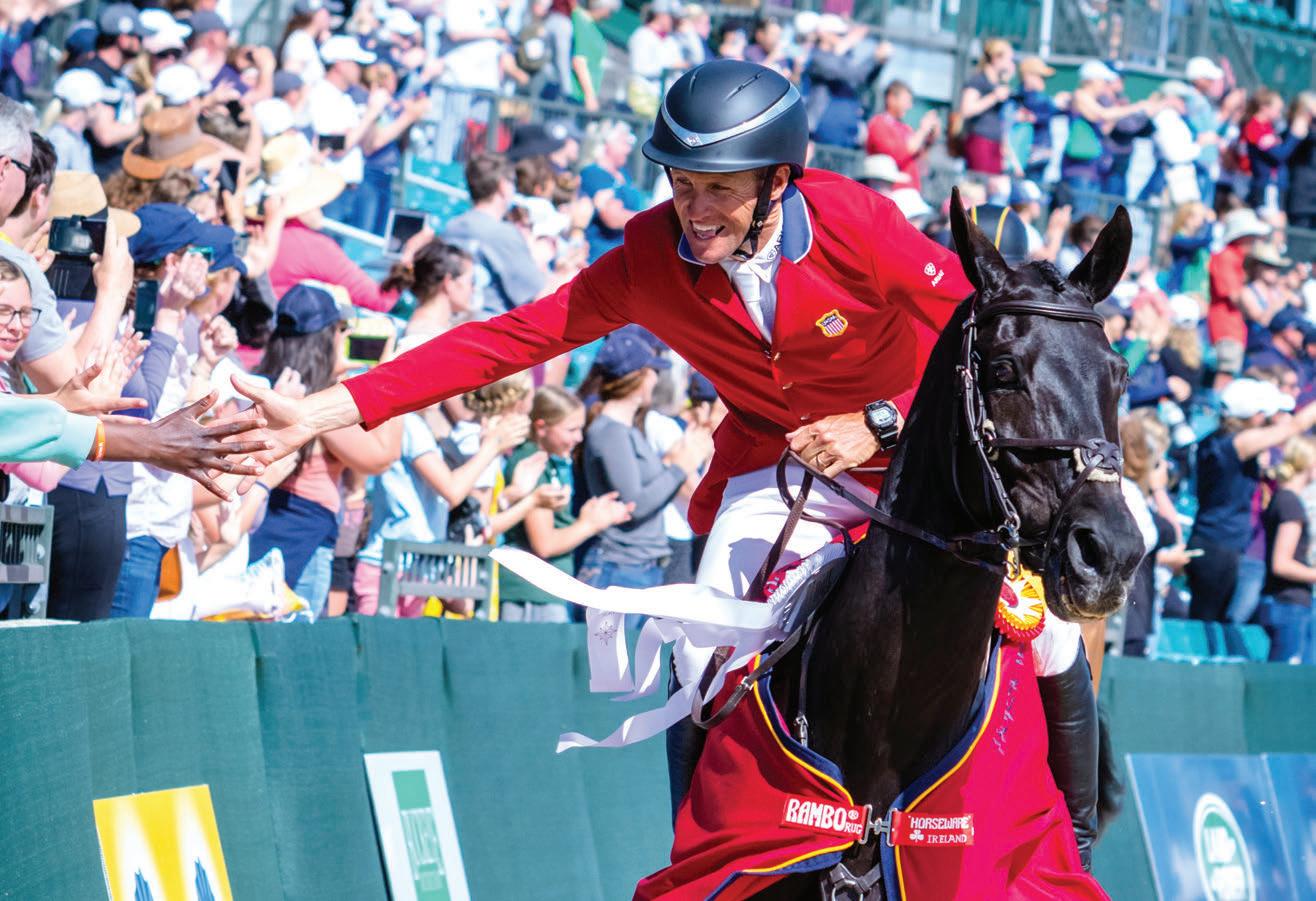



THE BEST WEEKEND APRIL 27-30, 2023 TICKETS ON SALE NOW! KENTUCKY HORSE PARK, LEXINGTON For more information, visit our website at kentuckythreedayevent.com or call (859) 254-8123.



Spring 2023 The Carolinas Equestrian 47

48 The Carolinas Equestrian Spring 2023 Index of Advertisers ADVERTISE IN OUR SUMMER 2023 EDITION! Our space reservation deadline is June 16 and the issue will be out in July. Check out the full ad rates and advertising guidelines on our website: thecarolinasequestrian.com, or contact us for more information. Advertising design assistance is available. Lauren Allen, Camden SC thecarolinasequestrian@gmail.com 803-270-1275 Pam Gleason, Aiken SC thecarolinasequestrianllc@gmail.com 803-643-9960 Ashley Haffey, Statesboro NC ads4thecarolinasequestrian@gmail.com 607-743-1309 Aiken County Farm Supply 47 Aiken Equestrian Center 51 Aiken Polo Club 20 Aiken Saddlery, Inc. 25 Camden Horse Blanket LLC 49 Camden Hunter Jumper Series 21 Carolina Horse Park 15 CHAPS 49 Clint Bertalan Farms LLC 36 DFG Stables 15 EMO Insurance 4 Equine Divine 25 FITS Equestrian 37 Henn Automotive 47 Highfields 45 Hunter’s Trace 37 Icon Global 52 LandRover Kentucky 3de 46 LEGISequine.com 16 NibbleNet 47 Olive Branch Farm 33 Redingote 37 Savannah College of Art and Design17 SC Equine Associates 33 Shane Doyle Farms 2 South Carolina Equine Park 36 Stable View, LLC 24 Sullivan Turner Team | Meybohm RE3 The Tack Room 21 Tryon Equine Law 49 Tryon Horse and Home 5
Marketplace

2B FARRIER SERVICE BRANDON BEST
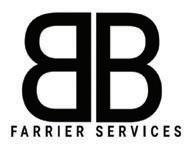
Looking forward to helping your horse stay in top shape (704) 928-7523, Dobson, NC



BAREFOOT TRIMMING
Servicing Davie County and surrounding area. Barefoot horses do compete at the highest levels. Optional glue on shoes for performance or transitioning.

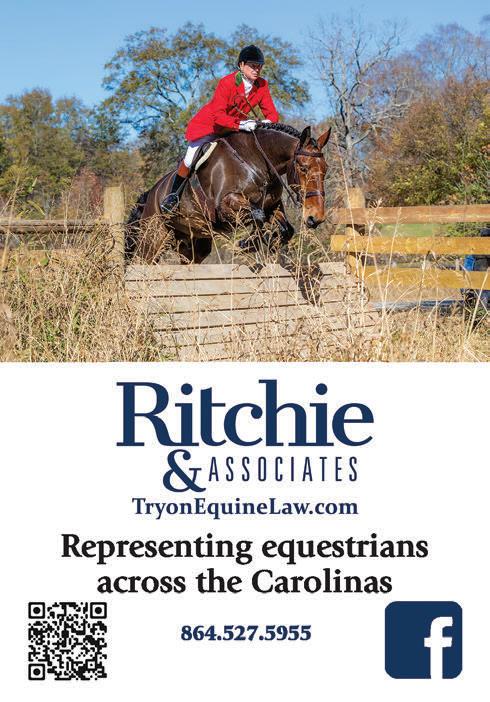
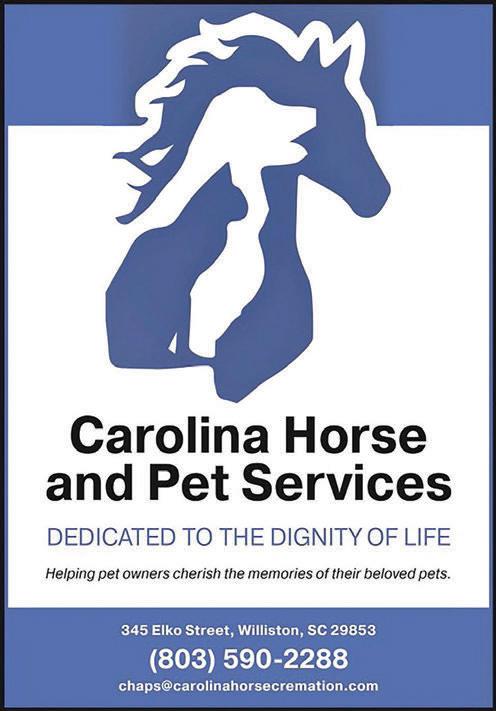
Lisa Habbley: 815-354-0765; lisahabbley@gmail.com


Spring 2023 The Carolinas Equestrian 49
Parting Shot

you looking at me?
Are
Allison Cyprus on her Dutch Warmblood Mare, Oceana ISF
USDF Four Year Old Test at Stable View Spring Fever Dresssage, Aiken, South Carolina. Photography by Pam Gleason
Aiken Equestrian Center, LLC




Lone Wolf Ranch now resides at the Aiken Equestrian Center. Husband and wife duo Shane and Deborah Byerly have partnered with the owner of the Aiken Equestrian Center to bring western based clinics and horse shows to the area. Their expertise lies within reining, ranch horse, working cow horse and all around Quarter Horse events.

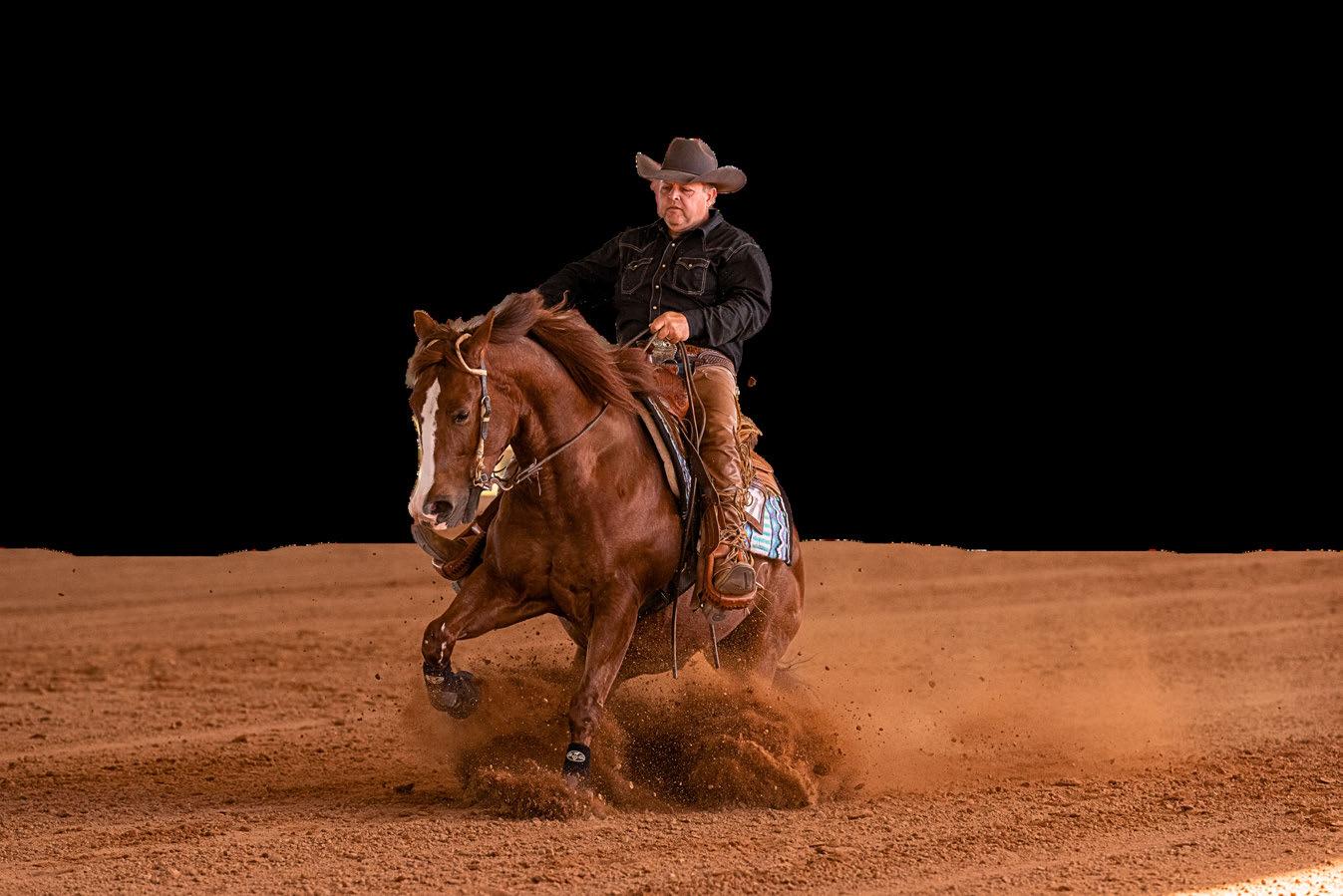
If you are interested in training services, performance horse sales, breeding or future events at the facility, please feel free to reach out or visit our website.
Amenities
100x200 Covered Arena
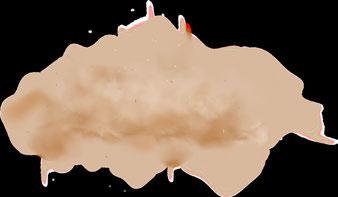
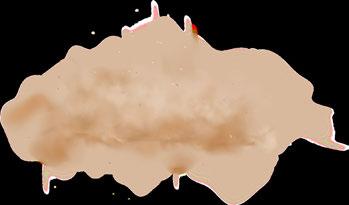
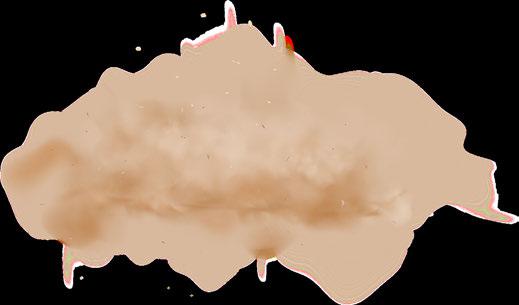



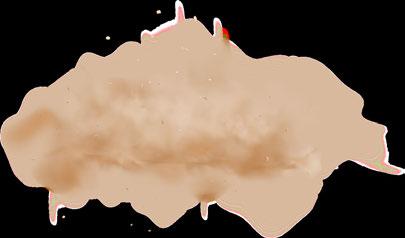






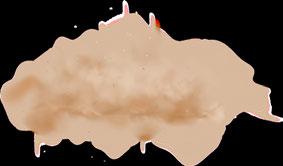

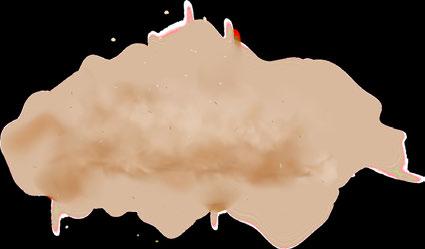




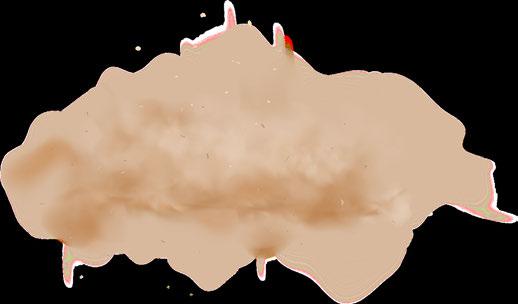




Large Outdoor Arena
98 Stall Show Barn Two 32 Stall Training Barns
Euro Walkers

Website: www.lonewolfranch.org Facebook: Lone Wolf Ranch TikTok: lonewolfranch2019 Phone: (803) 440-7423 Address: 2040 Peters Way Aiken, SC 29805
Two
32 Individual Paddocks Race Track and more!
EXQUISITE EQUESTRIAN ESTATE
—
UPSCALE - SECURE COMPOUND
—
MULTIPLE AMENITIES & LODGING

CONVERTIBLE INFRASTRUCTURE
MULTI-USE OPTIONS
—
EXCEPTIONAL HORSE FACILITIES
BARNS | STABLES | PASTURES

BREEDING LAB
CONVERTIBLE POLO FIELD & SPECTATOR PAVILION
Aiken, South Carolina 152 ± acres INFO@ICON.GLOBAL | 214.855.4000 | WWW.ICON.GLOBAL RANCH • COMMERCIAL • UNIQUE RESIDENTIAL • APPRAISAL
CRESTVIEW FARM
• INDEPENDENTLY LICENSED & INTERNATIONALLY CONNECTED FULL SERVICE BROKERAGE FIRM •























 By Pam Gleason
Gary Knoll
Will Coleman and Chin Tonic HS on the way to victory in the tenth annual Setters’ Run Farm Carolina International CCI 4*-S
By Pam Gleason
Gary Knoll
Will Coleman and Chin Tonic HS on the way to victory in the tenth annual Setters’ Run Farm Carolina International CCI 4*-S

 Gary Knoll
Gary Knoll

























 Pam Gleason Photography
Pam Gleason Photography
 Orchard Hill Ponies Aiken, South Carolina
Orchard Hill Ponies Aiken, South Carolina










 Lauren Allen Photography
Lauren Allen Photography












 Reed Edwards on a visit to Aiken.
Pam Gleason Photography
Reed Edwards on a visit to Aiken.
Pam Gleason Photography













































